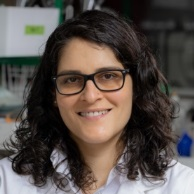Ionic Liquid-based Materials for Membrane Processes
A special issue of Membranes (ISSN 2077-0375). This special issue belongs to the section "Membrane Analysis and Characterization".
Deadline for manuscript submissions: closed (29 February 2020) | Viewed by 21153
Special Issue Editors
Interests: poly(ionic liquid)s; ionic liquids; gas separation; membranes; bio-based polymers; composites; ion gels; bioelectronic devices
Special Issues, Collections and Topics in MDPI journals
Interests: ionic liquids; mixed matrix membranes; metal organic frameworks; gas separation; biopolymeric structures; biomedical applications
Special Issue Information
Dear Colleagues,
Large improvements in membrane separation processes require novel materials with enhanced properties and performances. During the last 20 years, Ionic Liquids (ILs) have blossomed as alternative materials to improve separation processes, offering a versatile and unique tuneable platform for the design of task-specific advanced membranes with a broad range of different chemical structures, physical/chemical properties, morphologies, and separation performances. The potential of using functional IL-based materials has been widely exploited through diverse morphologies and membrane configurations (flat or hollow-fibber) for applications such as gas separation, fuel cells, and water purification.
Bearing in mind that membrane engineering, together with materials science, plays a key role in the development of high-performance membranes and more efficient separation technologies, this Special Issue is devoted to recent advances in the fabrication, characterization, and application of membranes based on ILs, poly(ionic liquid)s, or other organic or inorganic materials containing ILs within their structure. Topics of interest include supported ionic liquid membranes (SILMs), polymer/ionic liquid composites, mixed matrix membranes, ion gels, porous membranes, metal organic frameworks supporting ionic liquids (ILs@MOFs), and membrane contactors or hollow fibbers. Special attention will be given to innovative material design strategies; their synthesis and characterization; the study of structure–performance relationships unveiling, for instance, the role of the IL-based material and morphology; as well as the development of new approaches for material processing and membrane fabrication.
We warmly invite you to submit your original work to this Special Issue. Modeling and experimental research articles, communication, as well as reviews dealing with innovative research advances are particularly welcome.
Dr. Liliana C. Tomé
Dr. Luísa A. Neves
Guest Editors
Manuscript Submission Information
Manuscripts should be submitted online at www.mdpi.com by registering and logging in to this website. Once you are registered, click here to go to the submission form. Manuscripts can be submitted until the deadline. All submissions that pass pre-check are peer-reviewed. Accepted papers will be published continuously in the journal (as soon as accepted) and will be listed together on the special issue website. Research articles, review articles as well as short communications are invited. For planned papers, a title and short abstract (about 100 words) can be sent to the Editorial Office for announcement on this website.
Submitted manuscripts should not have been published previously, nor be under consideration for publication elsewhere (except conference proceedings papers). All manuscripts are thoroughly refereed through a single-blind peer-review process. A guide for authors and other relevant information for submission of manuscripts is available on the Instructions for Authors page. Membranes is an international peer-reviewed open access monthly journal published by MDPI.
Please visit the Instructions for Authors page before submitting a manuscript. The Article Processing Charge (APC) for publication in this open access journal is 2700 CHF (Swiss Francs). Submitted papers should be well formatted and use good English. Authors may use MDPI's English editing service prior to publication or during author revisions.
Keywords
- ionic liquids
- poly(ionic liquids)
- ILs@MOFs/COFs/POMs/PIMs
- ion gels
- supported ionic liquids
- composites
- mixed matrix membranes
- gas separation
- water purification
- fuel cells
- contactors







